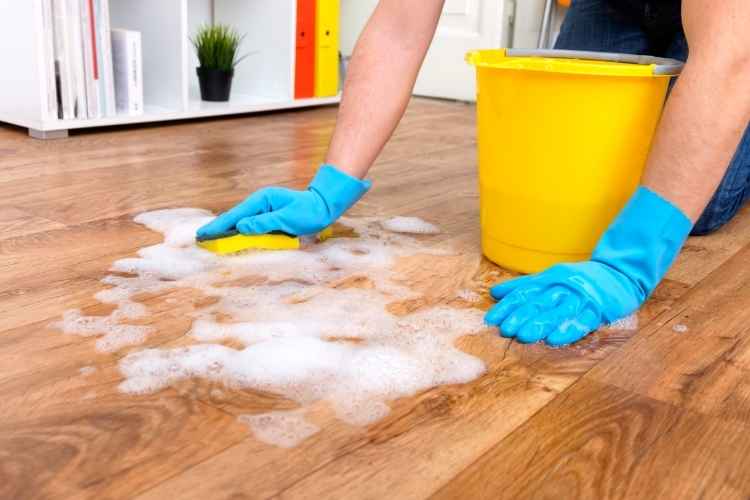
If you have hardwood floors, then you know how crucial it is to care for them. There are various solutions and cleaners for wood floor cleaning. Some of them work, and some don’t. We will discuss if stripping wood floors with vinegar is a good practice you should follow.
You can find different products for hardwood floors in the market. However, most of these cleaning products contain chemicals. That’s why many people prefer not to clean their floors with the items you tend to find in supermarkets. Instead, they opt for homemade cleaning solutions.
The way you clean hardwood floors will depend on the type that you have. There are various kinds of wood floors, and each one has different cleaning needs. You will also have to consider if your floors have stains, need refinishing, or other issues.
In this blog, we’ll focus on removing paint from wood floors with vinegar. We will also talk about another alternative you should consider for this process. Lastly, we’ll briefly explain how you should re-wax your hardwood floors.
So, keep reading and learn how to strip your floors properly.
Stripping Wood Floors with Vinegar: Learn How to Remove Paint
Vinegar is one of those products that aren’t exclusive for kitchen use. You can use it to clean areas around your home, including your hardwood floors. The reason behind this is that vinegar often helps break down the floor wax due to its acidity.
The key is to know how to use it. If you don’t use vinegar properly, then you could end up damaging your floors.
Follow these steps to remove paint by stripping wood floors with vinegar:
- Prepare the vinegar solution: Mix white vinegar with water and cream of tartar.
- Wipe the wood floors with a soft cloth or paintbrush.
- Scrub the wood floors with a brush.
- Clean off the solution with warm water.
Prepare the Vinegar Solution with Warm Water and Cream of Tartar
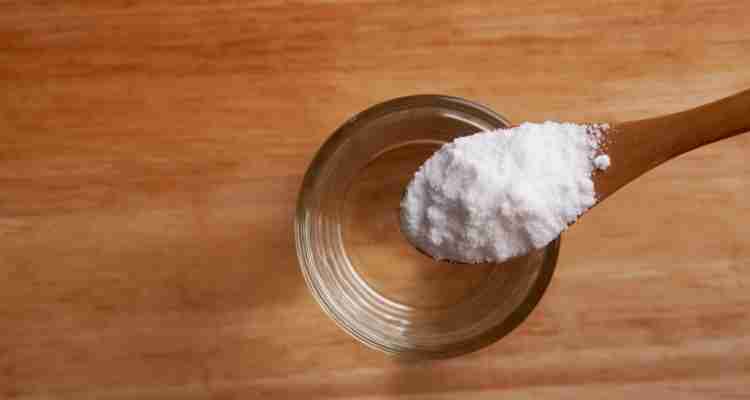
Firstly, you need to prepare the vinegar solution. For this step, you need to heat a small amount of white vinegar. You should be careful when heating this substance as it is an acid. So, do this at a low temperature. To heat the vinegar, you can either use your stove or the microwave.
Then, take a gallon of warm water and mix it with the vinegar; one cup should be enough. You can also add one cup of cream of tartar into the mix.
Wipe the Wood Floors with a Soft Cloth or Paintbrush
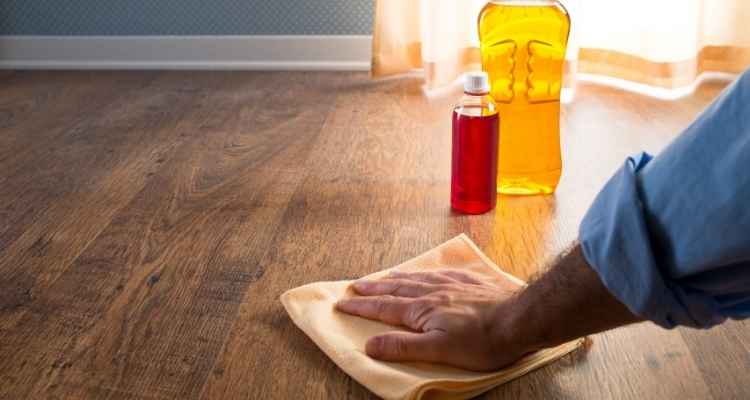
Next, you’ll need to rub the floor with the solution. We recommend you use a soft cloth or paintbrush and dip it into the vinegar solution.
Then, softly dab the mixture onto the hardwood floors. Focus on the area with the paint you want to remove.
Allow the solution to sit for 10 to 15 minutes to let the paint become soft. You can repeat this process if the paint is still stuck on the wood floors.
Some people will opt to use mineral spirits if the paint has penetrated onto the hardwood floors. Mineral spirit is a solvent also known as paint thinner. So, you can use it to try to soften the paint.
However, keep in mind to use thinners as a last resort since they are harsh solvents. Moreover, be sure to use this method only on oil-based floor finishes instead of water-based ones. Finally, use mineral spirits in small amounts.
Avoid allowing the solution to dry onto the wood as it will cause your floor’s boards to expand.
Scrub the Wood Floors with a Brush
After the solution has softened the paint, then it’s time to scrub the floor. Use a soft scrub brush and make circular motions to remove the paint. Work in small sections at a time.
If it’s taking too long to remove the paint, then you can use fine steel wool pads. It should make the job easier.
Cleaning Off the Solution with Warm Water
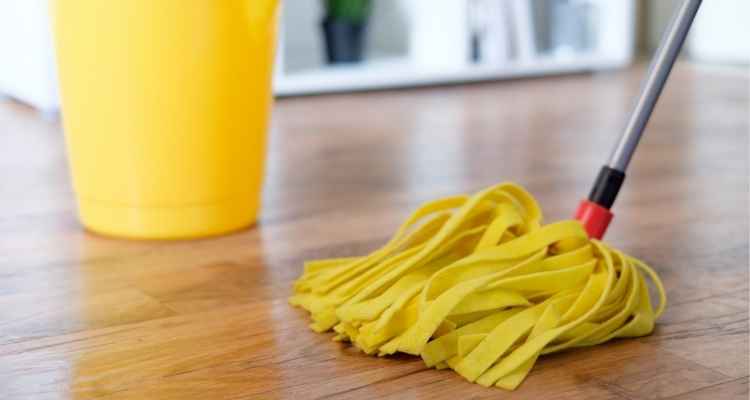
Finally, after you have entirely scrubbed the paint, it’s time to clean off the solution. Use clean, warm water to remove what’s left of the solution and the paint.
Then, make sure you dry your wood floors so that there’s no water left behind. If you don’t dry your floors properly, then you could damage their boards. We recommend doing this with a dry mop.
Alternative Methods for Removing the Wax from Your Wood Floors
If you’re not too keen on using vinegar, other natural floor cleaners strip the wax off your floors. For instance, an alternative is using ammonia to remove paint from wood floors.
You need to add a cup of ammonia. You’ll also need a cup of laundry detergent that’s bleach-free. Mix both of these solutions into one gallon of warm water.
Just like with vinegar, you’ll rub this solution onto the desired location. Then, allow the mixture to sit in for a couple of minutes to soften the wax. Once the wax is soft, use a soft brush to scrub it in a circular motion.
Finally, mop the hardwood floor with water to remove the cleaning solution.
Reapplying a New Wax Coat for Your Hardwood Floors
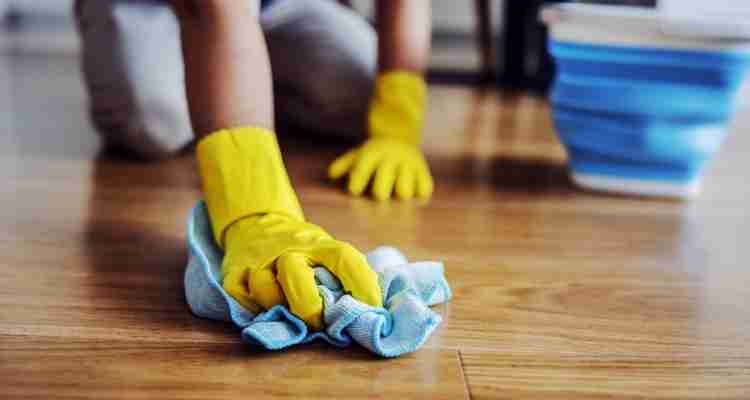
After successfully stripping your floors, it’s time for you to apply a new coat of wax. That way, it will keep its shine and glossiness. Not only that, but it will also help prevent any stains or scratches.
For both vinegar and ammonia, you’ll need to wait for the floor to be thoroughly dry to apply the new wax coating. You can ensure it by allowing the room to air dry.
Start by grabbing a lint-free cotton cloth, dampening it, and then wringing it. An old T-shirt can do the trick. Next, rub wax onto the fabric to then lightly apply it onto the surface. Be sure to follow the wax’s packaging instructions. Finish off by buffing the surface. You can do so using a polisher, a terry cloth-covered sponge mop, or a clean towel.
Now that you know the proper method of stripping wood floors with vinegar and ammonia, as well as re-waxing your wooden floors, it’s time for you to implement these steps.
However, if you wish to get flawless results, you can never go wrong with the help of a professional by your side. Contact Santiago’s Hardwood Flooring when needing expert assistance. We are here to help you out!
